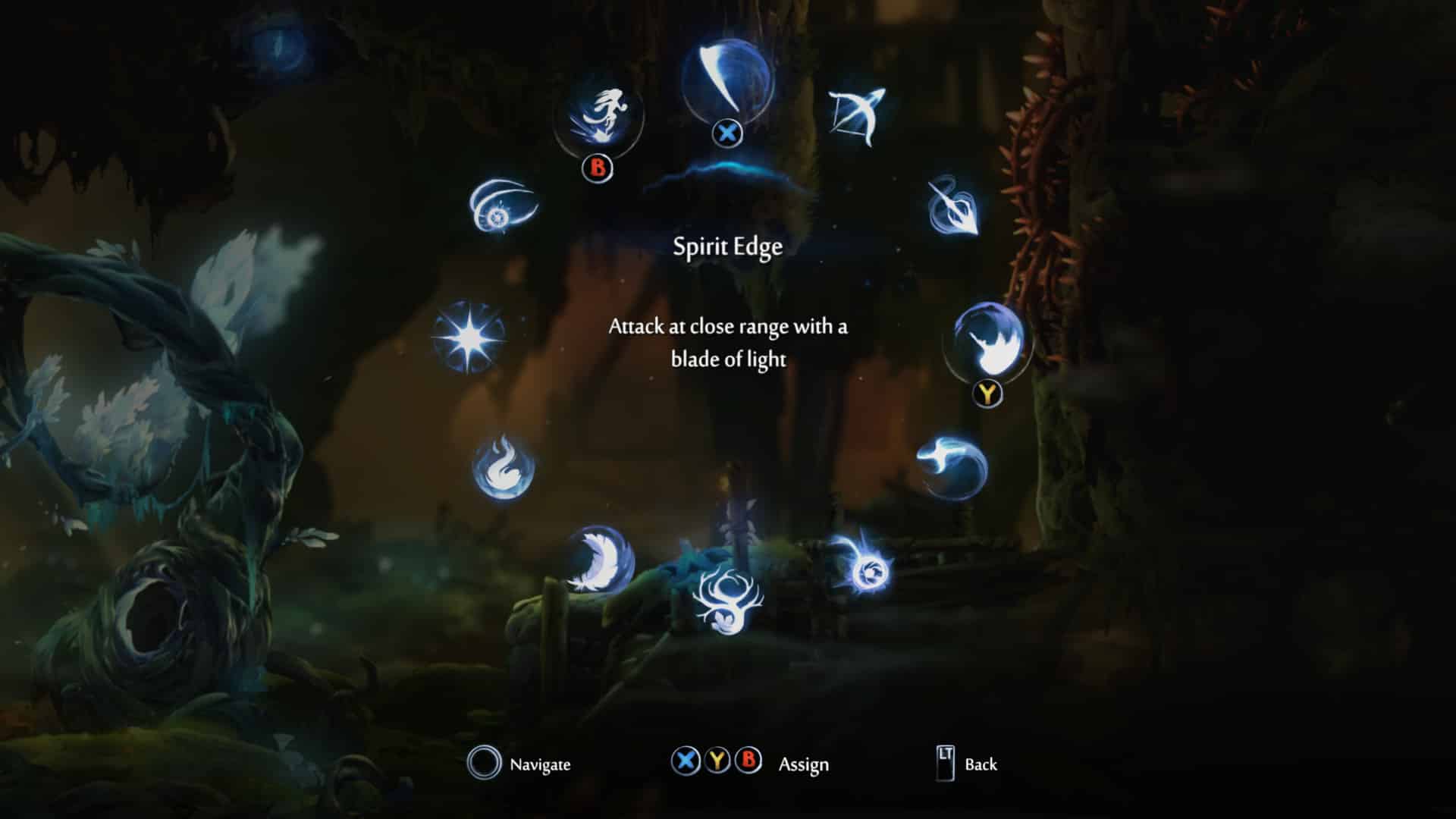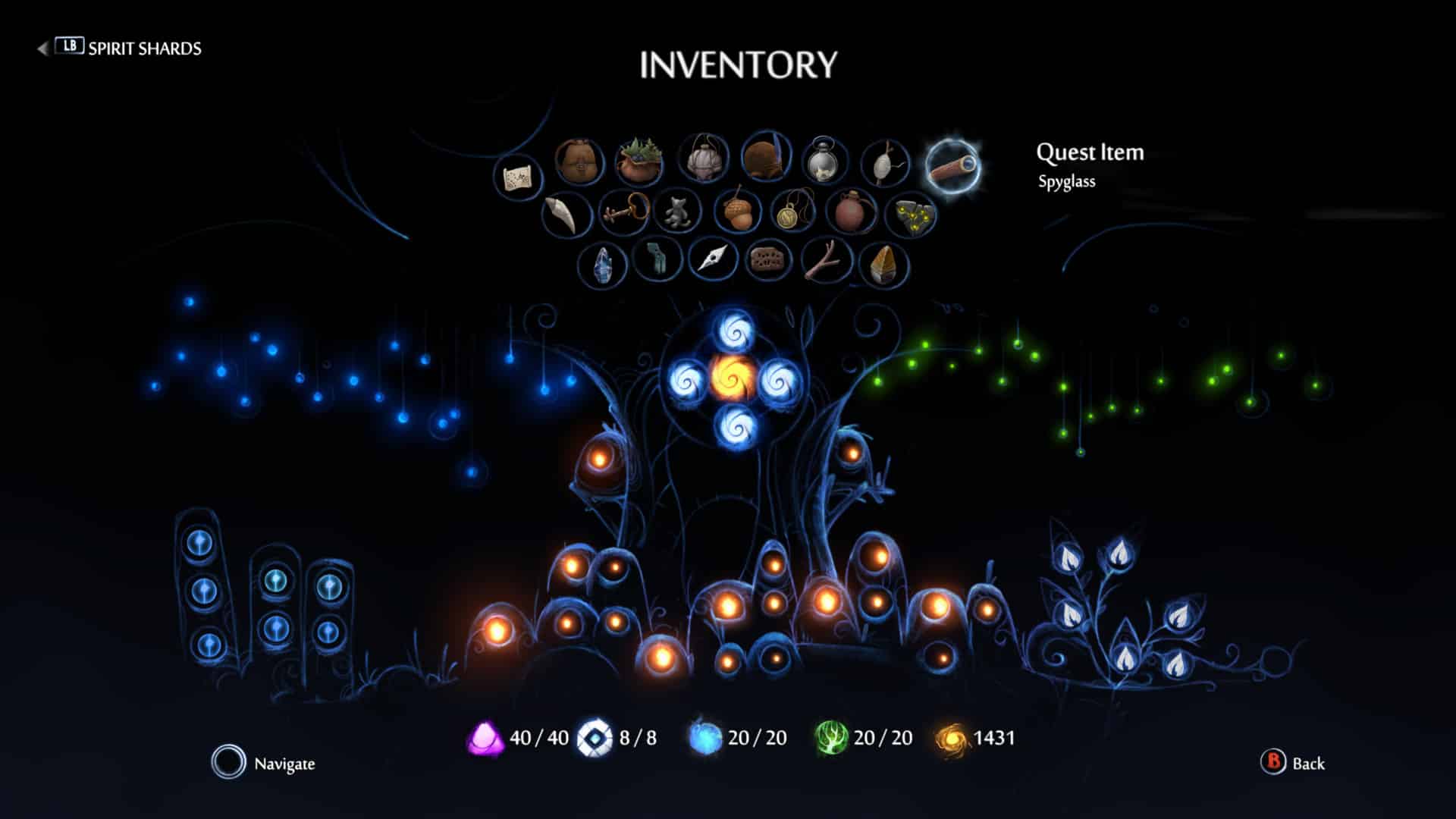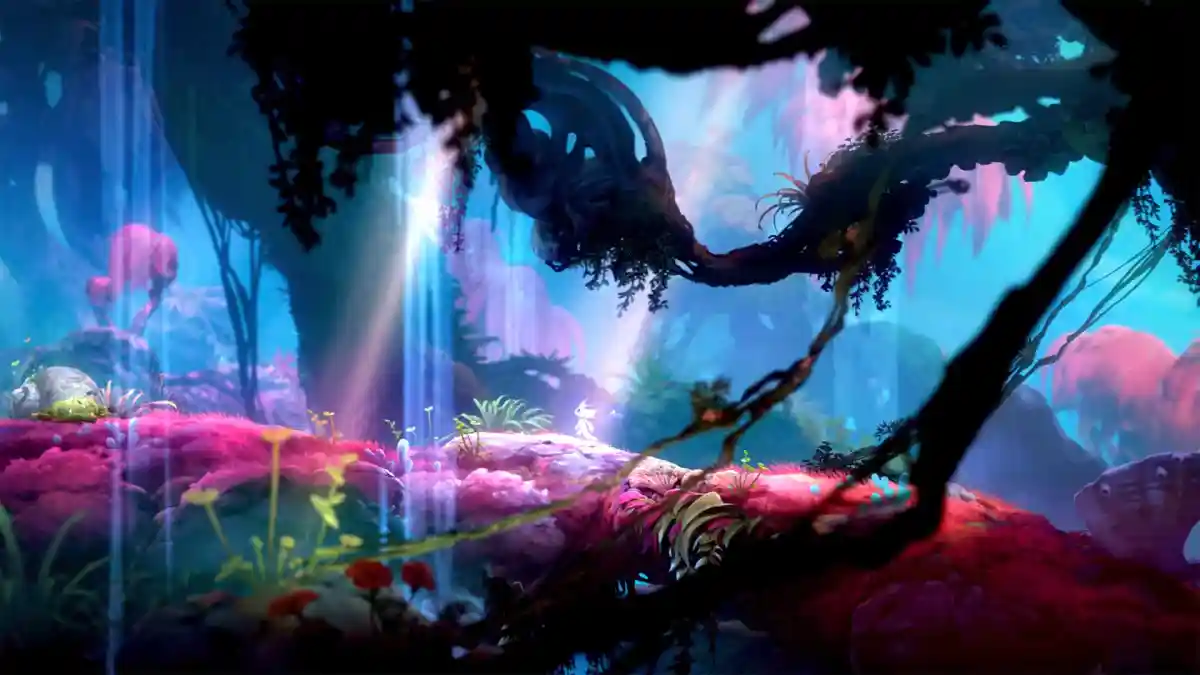Ori and the Will of the Wisps is a fantastic sequel that builds upon the Metroidvania heart of Ori and the Blind Forest by pulling inspiration not from the past, but rather from its contemporaries. While the roots of this tree might lie firmly in Super Metroid and Castlevania: Symphony of the Night, the branches of this wonderful follow-up are clearly and successfully drawing from 2017’s excellent Hollow Knight. And like its fellow gorgeous indie adventure, the magic in Will of the Wisps is in how it consistently encourages player freedom and rewards curiosity and experimentation — and how it is peppered with cutscenes that unfold like miniature Pixar gut-punches of emotion.
The sheer number of core abilities, combat options, movement skills, and perks both active and passive would be absolutely daunting if it weren’t for the graceful pace at which developer Moon Studios doles them out. It takes many of the skills earned throughout the original game — think scurrying up walls, gliding through the air, and double jumps — and bestows them upon you fairly early on as permanent abilities. With a firm grasp on Ori’s movement, you’ll quickly find yourself being able to tackle platforming challenges with the superheroic panache of Madeline in 2018’s Celeste.
The sequel has you back up to speed fairly early on and only builds from there with a pair of player-driven skill pools. The first are the 12 active attacks and abilities you come across throughout the adventure. You can have three assigned to the face buttons at any given time, which means you have to experiment and see what works for each different scenario the game throws at you. These range from a quick sword, to a heavy hammer, to lobbed fireballs that can be bounced off of to reach higher ground. And then there are the 31 different Spirit Shards, which have taken the place of the original game’s more traditional skill tree. These shards can be either found hidden throughout the world or purchased from a friendly NPC. These range from an incredibly useful triple jump and the ability to stick to walls, to being able to spot secrets hidden throughout the world and even swapping your health and energy meters.

This is where the shades of Hollow Knight’s inspiration become most prominent. The catch here is that you only have a limited number of slots that you can equip at any given time, which forced me to really think about the kind of strategy I wanted to take into a given situation. If I knew there was a lot of platforming coming up, I’d rely on stuff like triple jumps and clinging to walls. If I was stuck in a particularly nasty combat encounter, I’d build out my Ori with multiple attacks that can deal extra damage and also net me additional orbs for each enemy killed. Experimenting with your loadout fundamentally changes the way you think about traversal, combat, and environmental puzzles.
The design and flow of the original game’s world was made up of locks and keys — locks being obstacles and keys being the abilities needed to pass said obstacles — that felt like a classic Metroidvania. And while this method of design is still at play in Will of the Wisps, the freedom that comes from how you equip yourself when traversing the world makes your actions feel unique and personal. By the final act of the game, I found myself having two main “loadouts” for Ori — one for being able to maneuver through the world with speed, grace, and finesse, and another that buffed my little bunny pal during waves of enemy challenges.
This sense of choice also leads to the game being highly replayable. There are certain skills and abilities that I didn’t gain until late into my playthrough that would’ve completely changed the way I approached scenarios throughout the entire game. I relied heavily on quick sword slashes and heavy hammer pounds, but seeing unique other attacks like charged up javelin spears, boomeranging throwing stars, and energy-draining explosions made me want to immediately hop back in and toy around with them.

One final thing I loved about this form of player progression in Will of the Wisps is how it was represented visually throughout the game’s menus. If you just pause the game at any moment, you’re treated to a portrait that slowly fills in with your accomplishments over the course of your adventure. Abilities acquired take form on the left side of the screen, while bosses/tamed spirits appear on the right in a tableau that almost feels like the Golden Statue that lies at the heart of Super Metroid’s Tourian. Likewise, going into the inventory menu displays all of your items, completed quests, and other accomplishments in a visual manner that unfurls like a family tree. This is admittedly a small touch that many might simply gloss over, but it’s a very neat one that fed into that sensation like I was the author of my own story.
The sense of expression I got from Ori and the Will of the Wisps, and by virtue Hollow Knight, is something that will stick with me for quite some time. It genuinely seems to me that what these two games did in terms of adding a litany of options that feed into player-dictated loadouts fundamentally changed how both were played, and I suspect many others developers will draw from this in the hybrid Metroidvania genre going forward.






Published: Mar 18, 2020 02:06 pm